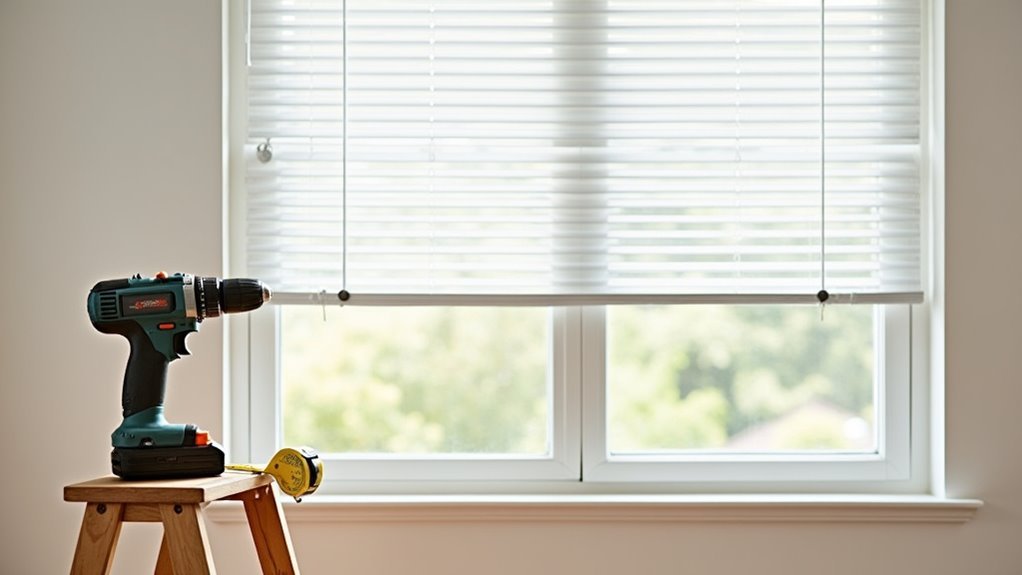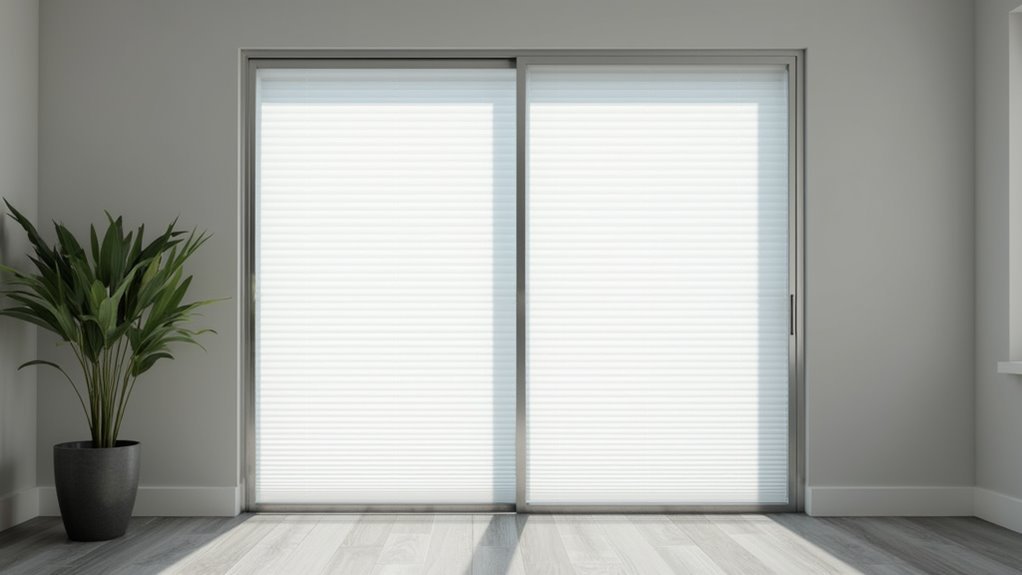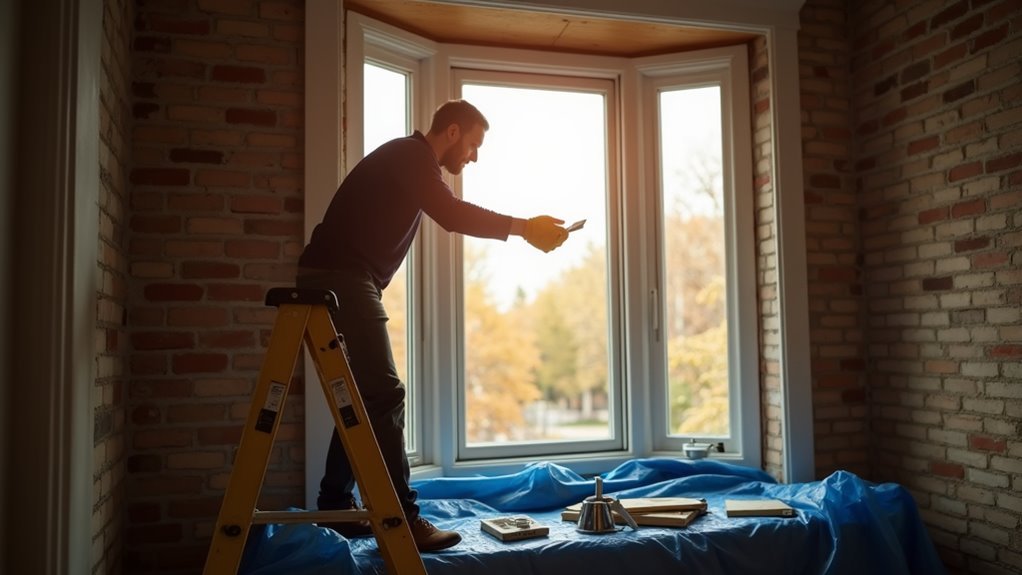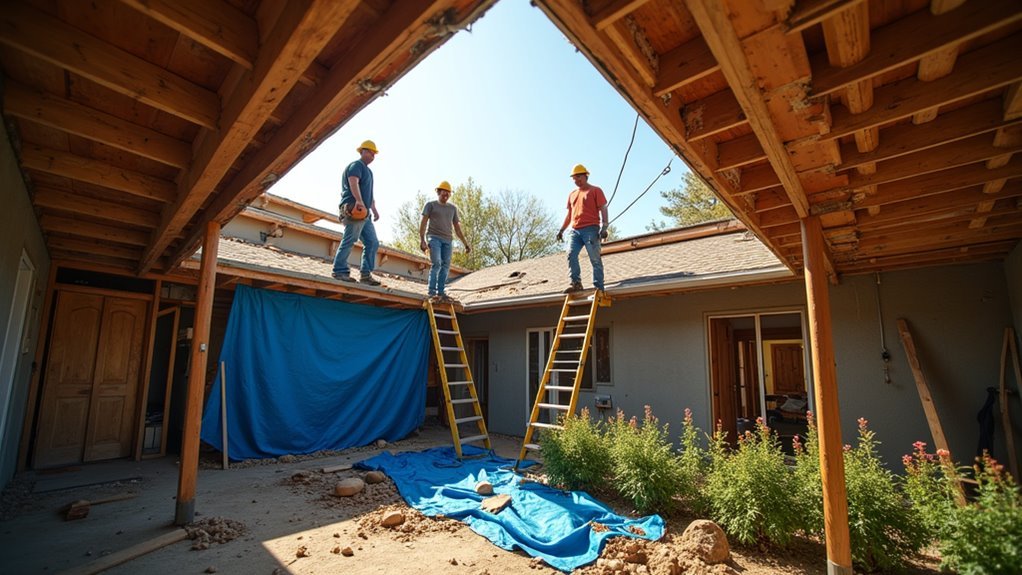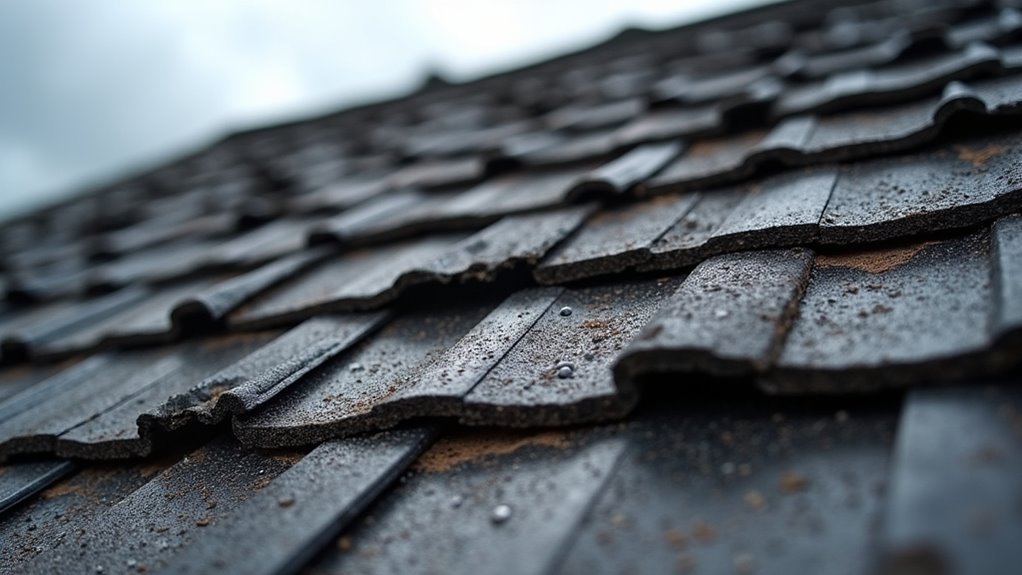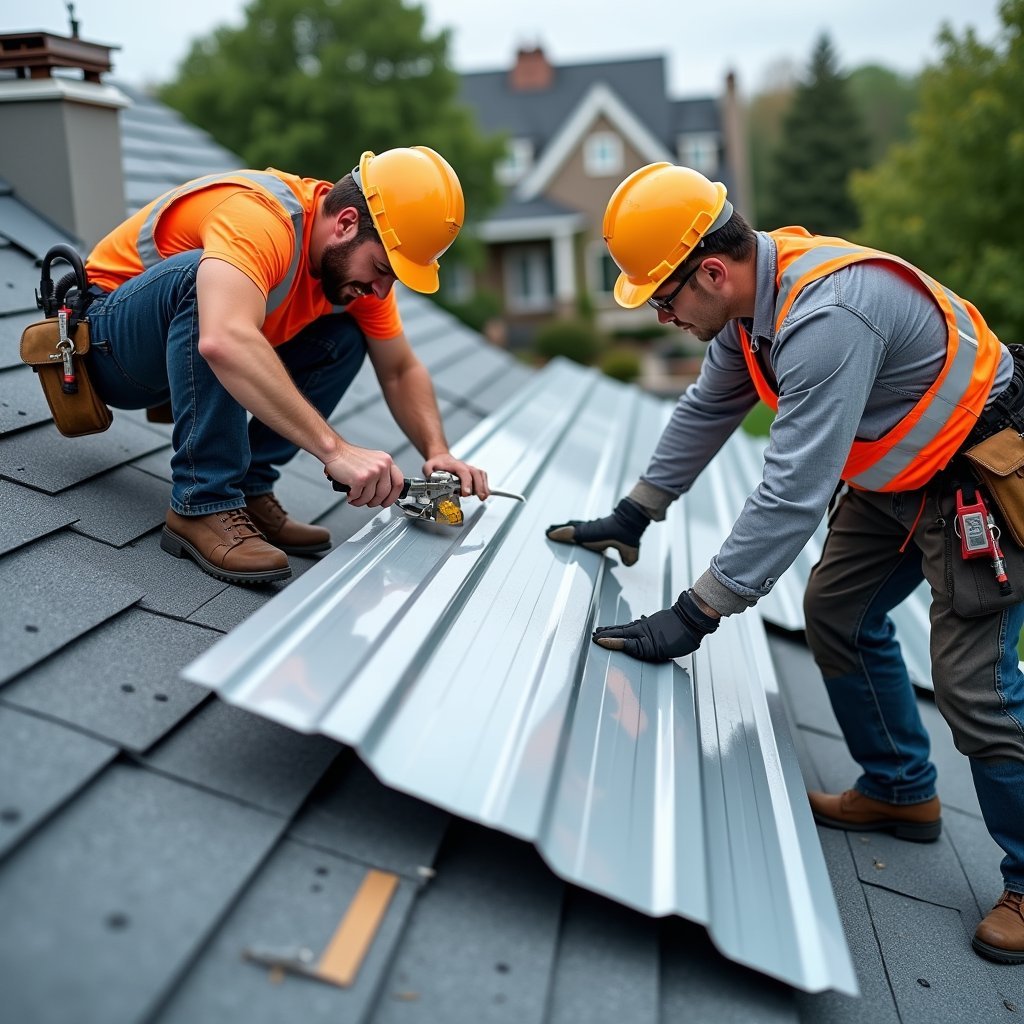Your homeowners insurance will cover roof leaks caused by sudden, accidental damage like storms, falling trees, and hail. However, you won’t receive coverage for leaks resulting from normal wear and tear, poor maintenance, or aging materials. To file a successful claim, you’ll need to prove the leak stems from a covered peril and document the damage immediately. Understanding your policy’s specific terms and exclusions will help determine if your leak qualifies for coverage.
Common Causes of Roof Leaks Covered by Insurance

While homeowners insurance policies vary by provider, most standard policies cover roof leaks caused by sudden, accidental damage from specific perils. Your policy typically covers damage from severe weather events like hurricanes, tornadoes, hail storms, and falling trees. Fire and explosion-related roof damage is also commonly covered.
Among the most common leak sources that insurers cover are impact damage from falling objects, vandalism, and the weight of ice, snow, or sleet. If a windstorm tears off shingles or creates openings in your roof, resulting water damage will likely be covered up to your insurance claim limits. However, you’ll need to demonstrate that the leak resulted from a covered peril rather than gradual wear and tear or lack of maintenance, which aren’t typically covered under standard policies.
When Insurance Won’t Cover Your Leaking Roof

Although standard homeowners insurance provides coverage for many types of roof damage, several common scenarios won’t qualify for claims. Insurance companies typically reject claims related to normal wear and tear, which includes deterioration from aging, weathering, and sun exposure. Your policy also won’t cover damage resulting from maintenance neglect, such as failing to repair known issues or ignoring visible signs of deterioration.
You’ll face claim denial if your roof leak stems from improper installation, manufacturing defects, or the use of substandard materials. These issues fall under construction liability or manufacturer warranties. Furthermore, insurers won’t cover damage from pests, including rodents and birds, or problems arising from DIY repairs gone wrong. If your roof exceeds its expected lifespan or hasn’t been properly maintained, you’ll likely need to cover repair costs out-of-pocket.
Steps to File a Roof Leak Insurance Claim

When you uncover a roof leak that appears to qualify for insurance coverage, taking immediate action can greatly improve your chances of claim approval. Understanding the claim process and following your insurance requirements carefully will streamline your filing.
| Step | Action | Timeline |
|---|---|---|
| 1 | Document damage with photos/video | Immediately |
| 2 | Prevent further damage with tarps | Within 24 hours |
| 3 | Contact insurance provider | Within 48 hours |
| 4 | Meet with claims adjuster | As scheduled |
| 5 | Submit repair estimates | Within 30 days |
Before your adjuster arrives, gather maintenance records, previous repair documentation, and recent roof inspection reports. You’ll need to demonstrate that the damage wasn’t caused by neglect or normal wear and tear. Keep detailed notes of all conversations with your insurance company and contractors throughout the claims process.
Understanding Your Policy’s Roof Coverage Terms
Before filing a roof leak claim, you’ll need to thoroughly understand your homeowners insurance policy‘s specific coverage terms and exclusions. Your policy’s roof coverage typically includes damage from sudden, accidental events like storms, fallen trees, or impact damage. However, standard policies won’t cover leaks resulting from poor maintenance or normal wear and tear.
Review your policy’s declarations page to identify your coverage limits, deductible amount, and any special endorsements affecting roof claims. Pay close attention to policy exclusions that might void coverage, such as pre-existing damage or deterioration due to time. You’ll also want to verify if your policy provides replacement cost value (RCV) or actual cash value (ACV) for roof repairs. Understanding these terms guarantees you know what expenses you’re responsible for and what your insurer will cover.
Tips for Documenting and Preventing Roof Damage
Having a clear understanding of your policy’s coverage is just the starting point proper documentation and preventive measures can greatly strengthen your claim and protect your investment. Start by creating a detailed maintenance checklist and schedule regular roof inspections, ideally twice per year. Document your roof’s condition through dated photographs and keep records of all repairs, professional assessments, and maintenance work performed.
When you spot potential issues, take immediate photos from multiple angles and maintain a log of when you initially noticed the problem. During your roof inspection, pay special attention to damaged shingles, failing sealants, and signs of water intrusion. You’ll want to address minor issues promptly before they develop into major problems that could complicate your insurance claim or even lead to claim denial.
Frequently Asked Questions
How Does the Age of My Roof Affect My Insurance Premium?
Your roof’s lifespan directly impacts your insurance premium, with older roofs typically resulting in higher rates. Insurance companies view aging roofs as higher-risk assets due to their increased likelihood of damage and insurance claims. You’ll find that maintaining a roof under 20 years old often qualifies you for better rates. Some insurers may even require roof maintenance inspections or deny coverage if your roof exceeds certain lifespan thresholds.
Can I Switch Insurance Providers if My Roof Claim Is Denied?
Yes, you can switch insurance providers even after a denied roof claim. However, during the insurance claim process, you’ll need to disclose the previous claim denial to your new provider. Policy transfer options may be limited, as insurers typically review your claims history. It’s vital to understand that the new policy won’t cover pre-existing damage, and some providers might require a roof inspection before offering coverage.
Will Installing a New Roof Type Void My Existing Coverage?
Changing your roof type could potentially affect your existing coverage, so it’s essential to notify your insurance provider before making any modifications. Different roof types carry varying coverage implications based on factors like material durability, weather resistance, and local building codes. You’ll need to obtain pre-approval from your insurer and possibly adjust your policy to maintain proper coverage. Some insurers may require specific documentation or inspections before continuing your coverage.
Do Solar Panel Installations Impact My Roof Leak Coverage?
While solar panel benefits are significant, their installation can affect your coverage. You’ll need to notify your insurer before installation, as improper mounting can void your policy. Most carriers require professional installation following strict guidelines to maintain coverage. You should check that your contractor follows manufacturer and local building code specifications. Once properly installed, many insurers will continue your existing leak coverage, but they may adjust your premium accordingly.
Are Temporary Roof Repairs Covered While Waiting for Insurance Approval?
You’ll typically need to make temporary repairs to prevent further damage while awaiting insurance approval, and most policies require you to take these reasonable steps. Your insurer will often reimburse you for temporary repair costs if they’re documented and reasonable. Keep all receipts and take photos before and after temporary fixes. Don’t make permanent repairs until your claim is approved, as this could void your coverage or complicate the claims process.

